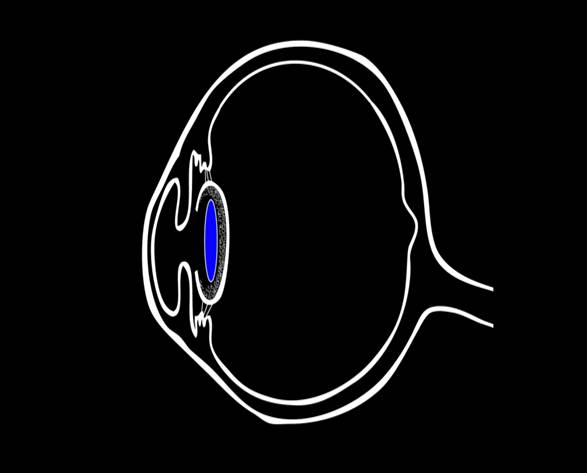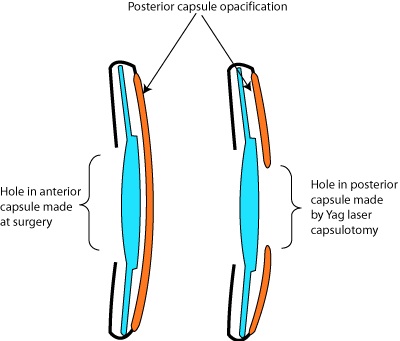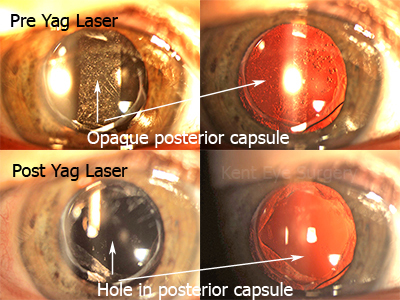During cataract surgery, the capsular sheath that supports the original lens is left in place to hold the new intraocular lens implant in place. One to 2 years after surgery, this capsular sheath can lose it’s transparency resulting in blurring of vision or glare driving at night. Once the vision starts to deteriorate, it can get worse quite quickly, progressing rapidly over a few months.
The loss of transparency in the capsule is termed posterior capsule opacification and Yag laser capsulotomy is the procedure used to treat this condition.
The diagram below illustrates the location of the opaque membrane behind the intraocular lens implant drawn in blue.
The laser makes a small hole in the “posterior capsule” behind the intraocular lens.
The images on the left were taken at a slit lamp by using a broad beam illuminating the capsule from the side. The images on the right are seen using retroillumination, in which light is shone straight into the eye. Light bounces off the retina and illuminates the capsule from behind. The white lights are simply artefacts from the light source reflecting back off the cornea. You can seen the edge of the intraocular lens clearly in the retroillumination images, particularly at the bottom right just internal to the pupil.




